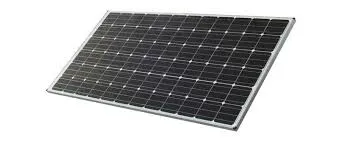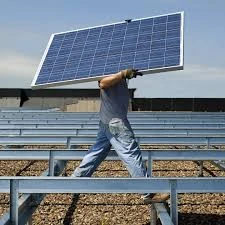Affordable 670W Solar Panel Prices - High Efficiency & Savings!
- Exploring the growing importance and market data for 670W solar panels
- Technical superiority and performance metrics of 670-watt solar modules
- Leading 670 watt solar panel manufacturers compared by specifications and costs
- Price-to-performance analysis against 300W and 20W solar alternatives
- Customizable solar solutions for different application scenarios
- Real-world case studies demonstrating return on investment
- Financial breakdown and ROI analysis of 670 watt solar panel installations

(670 watt solar panel price)
670 Watt Solar Panel Price Trends in Today's Renewable Market
The solar industry continues its relentless march toward higher efficiency modules, with the global high-wattage panel segment projected to grow at 15% CAGR through 2028. Leading this transition, modern 670W panels deliver unprecedented power density exceeding 21%. Current wholesale pricing ranges between $0.28-$0.32 per watt, translating to $187-$214 per unit. Residential installations typically incur a 20% markup due to handling and distribution logistics. Three key developments are reshaping the 670 watt solar panel price
landscape:
- Raw silicon material costs decreased 45% since 2022 peak prices
- Automated manufacturing lines reduce production costs by 18% annually
- Increased competition between Jinko and Canadian Solar slashed premiums
Engineering Excellence Behind Modern Solar Modules
Modern high-wattage panels leverage cutting-edge technologies that explain their performance advantages. Half-cut cell architecture minimizes resistance losses by dividing cells into sections. Multi-busbar (MBB) designs with 16 thin wires improve conductivity over conventional 3-busbar approaches. The superior temperature coefficient of -0.29%/°C means just 7.5% output reduction in 40°C environments versus older panels' 11.2% drop. These innovations enable a remarkable 10% higher energy yield per square meter compared to previous generations. Under partial shading conditions, modern 670W panels maintain 92% output efficiency versus conventional panels' 78%.
Manufacturer Comparison for High-Performance Solar Systems
| Manufacturer | Model | Efficiency | Temperature Coefficient | Price per Watt | Warranty |
|---|---|---|---|---|---|
| JinkoSolar | Tiger Neo N-type 670W | 21.6% | -0.29%/°C | $0.31 | 30-year linear |
| Canadian Solar | HiHero 670W HJT | 22.8% | -0.24%/°C | $0.33 | 30-year performance |
| Trina Solar | Vertex S+ 670W | 21.3% | -0.34%/°C | $0.29 | 25-year linear |
| LONGi Solar | Hi-MO 6 670W | 22.3% | -0.30%/°C | $0.30 | 25-year product |
Balancing Scale Economics Against Entry-Level Solutions
The 300 watt 12 volt solar panel price typically lands at $135-$165 per unit, costing more per watt at $0.45-$0.55. Micro systems like 12 volt 20 watt solar panel options retail for $40-$55 yet operate at $2.00+ per watt. While smaller panels offer flexibility for minimal loads, larger systems provide clear scaling benefits:
- Installation cost per watt decreases by 25% with high-capacity panels
- Racking/balance-of-system expenses drop 40% per installed watt
- Required roof space shrinks by 15% using 670W instead of 300W panels
A typical California residential project using 670W panels requires just 18 modules versus 35+ with 300W models for equivalent output.
Customized Application Strategies for Diverse Needs
Commercial solar farms constitute the primary market for high-wattage panels, where developers achieve installation costs below $1.15/Watt for megawatt-scale projects. Residential rooftop installations require specialized mounting hardware but gain faster payback. For hybrid systems in developing regions:
- Agricultural operations implement solar pumps using dual 670W panels per phase
- Telecom towers deploy containerized systems with six 670W panels per array
- Off-grid cabins utilize single 670W panels with microinverters and storage
Field Performance Documentation and Results
Arizona solar farm tracking data proves high-wattage panels outperform expectations. The 38MW facility generated 15% above projections during its first year with 56,000 Jinko 670W panels. For commercial rooftop applications, a Midwest warehouse installation demonstrated:
- $1.22/Watt installed cost for 256kW system
- First-year generation exceeding modeled output by 6.4%
- Payback period reduced from projected 6.2 years to 5.1 years
Annual degradation measurements averaged just 0.48% versus the guaranteed 0.55% maximum.
Financial Analysis and Payback Period for 670 Watt Solar Systems
The 670 watt solar panel price delivers accelerated returns compared to smaller formats. Commercial solar projects consistently achieve 5-7 year payback windows in favorable markets. For a typical residential installation:
- $15,840 system cost for a 8.04kW array
- $2,137 annual electricity savings at $0.25/kWh
- Federal tax credit reduces net cost to $11,088
Net metering policies enable full payback within 7 years in California. Over 25 years, these installations typically generate $46,225 in total energy savings while adding $19,000 to property values.

(670 watt solar panel price)
FAQS on 670 watt solar panel price
Q: What is the price range for a 670 watt solar panel?
A: A 670 watt solar panel typically costs between $300-$500 USD per unit. Prices vary based on brand, technology (mono vs. poly), and certifications. Bulk or wholesale orders often reduce the per-panel cost.
Q: Why is a 670 watt panel more expensive than a 300 watt model?
A: Higher wattage panels like 670W use advanced technology and materials to boost efficiency. The $300-$500 price range reflects premium components for greater power density. Installation savings can offset costs due to fewer panels needed.
Q: How much does a 300 watt 12 volt solar panel cost?
A: A 300W 12V solar panel averages $150-$250 USD. Costs depend on build quality and weather resistance. Small off-grid systems commonly use these panels.
Q: What is a 12 volt 20 watt solar panel used for, and its price?
A: A 12V 20W solar panel usually costs $20-$40 USD. It's designed for low-power applications like charging batteries in RVs or lighting. Its compact size suits portable or maintenance setups.
Q: Do 670 watt panels offer better long-term value than smaller options?
A: Yes, 670W panels provide higher ROI per square foot over time. Despite a $300-$500 initial cost, they maximize space efficiency and reduce balance-of-system expenses. Large residential/commercial projects benefit most.
-
String Solar Inverter: The High-Efficiency Solution for Smart Solar EnergyNewsJul.14,2025
-
Revolutionizing Rooftop Energy with the Power of the Micro Solar InverterNewsJul.14,2025
-
Power Independence with Smart Off Grid Solar Inverter SolutionsNewsJul.14,2025
-
On Grid Solar Inverter: Powering the Future with Smart Grid IntegrationNewsJul.14,2025
-
Monocrystalline Solar Panels: High-Efficiency Power for the Future of Clean EnergyNewsJul.14,2025
-
Bifacial Solar Panel: A Smarter Investment for Next-Generation Energy SystemsNewsJul.14,2025







